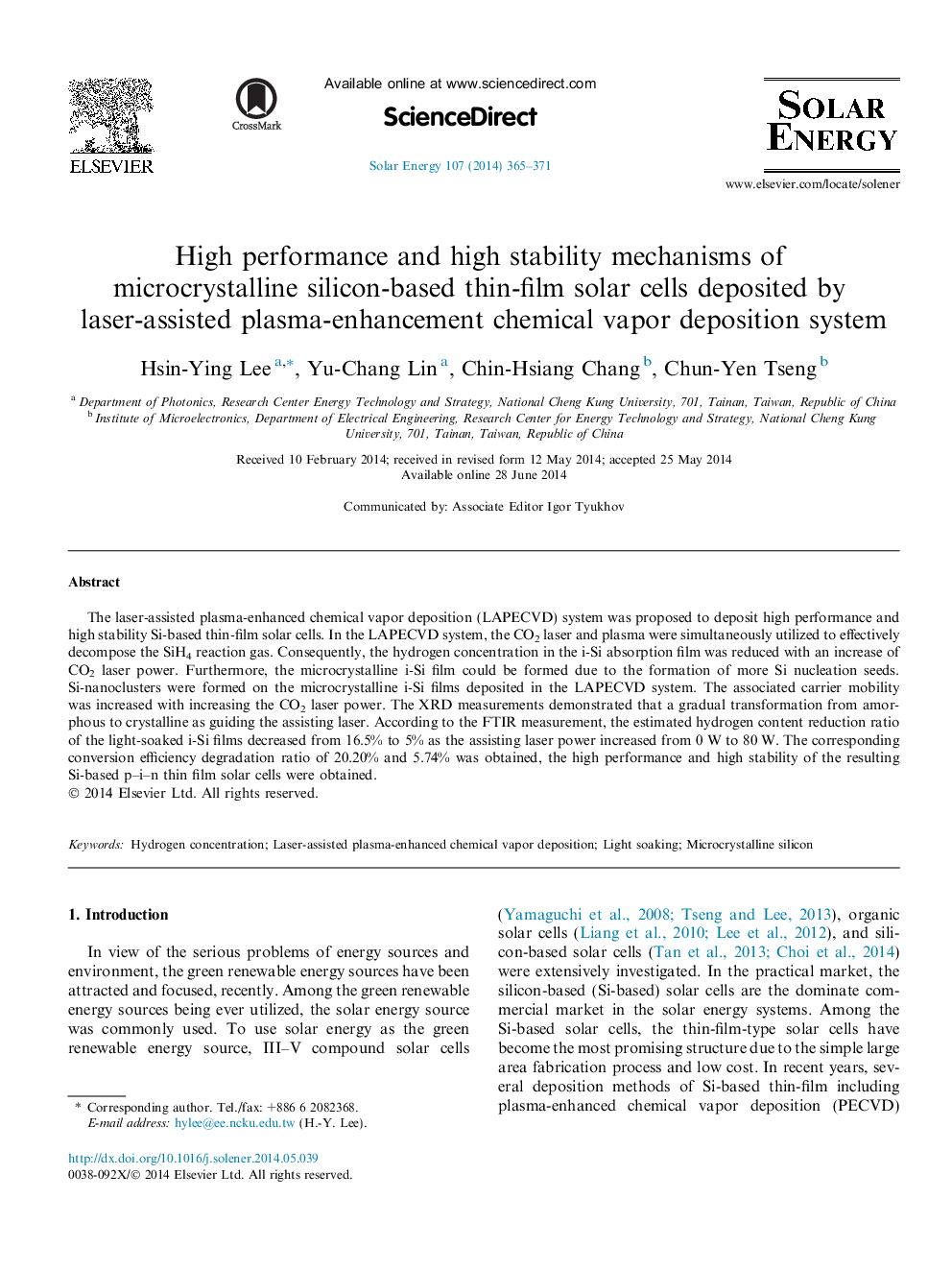| کد مقاله | کد نشریه | سال انتشار | مقاله انگلیسی | نسخه تمام متن |
|---|---|---|---|---|
| 1549947 | 1513111 | 2014 | 7 صفحه PDF | دانلود رایگان |
• The microcrystalline Si-based thin-film solar cells deposited by LAPECVD were investigated.
• The hydrogen concentration in the i-Si film was reduced with an increase of CO2 laser power.
• The carrier mobility of the i-Si film was enhanced with increasing the CO2 laser power.
• The laser-assisted Si films possessed more stable performances upon light soaking.
• The efficiency degradation ratio of light-soaked cells deposited with 80 W laser power was 5.74%.
The laser-assisted plasma-enhanced chemical vapor deposition (LAPECVD) system was proposed to deposit high performance and high stability Si-based thin-film solar cells. In the LAPECVD system, the CO2 laser and plasma were simultaneously utilized to effectively decompose the SiH4 reaction gas. Consequently, the hydrogen concentration in the i-Si absorption film was reduced with an increase of CO2 laser power. Furthermore, the microcrystalline i-Si film could be formed due to the formation of more Si nucleation seeds. Si-nanoclusters were formed on the microcrystalline i-Si films deposited in the LAPECVD system. The associated carrier mobility was increased with increasing the CO2 laser power. The XRD measurements demonstrated that a gradual transformation from amorphous to crystalline as guiding the assisting laser. According to the FTIR measurement, the estimated hydrogen content reduction ratio of the light-soaked i-Si films decreased from 16.5% to 5% as the assisting laser power increased from 0 W to 80 W. The corresponding conversion efficiency degradation ratio of 20.20% and 5.74% was obtained, the high performance and high stability of the resulting Si-based p–i–n thin film solar cells were obtained.
The laser-assisted plasma-enhanced chemical vapor deposition (LAPECVD) system was proposed to deposit high performance and high stability Si-based thin-film solar cells. The CO2 laser and plasma were simultaneously utilized to completely decompose the SiH4 reactance gas. Therefore, Si-nanoclusters were formed on the microcrystalline i-Si films deposited in the LAPECVD system.Figure optionsDownload as PowerPoint slide
Journal: Solar Energy - Volume 107, September 2014, Pages 365–371
